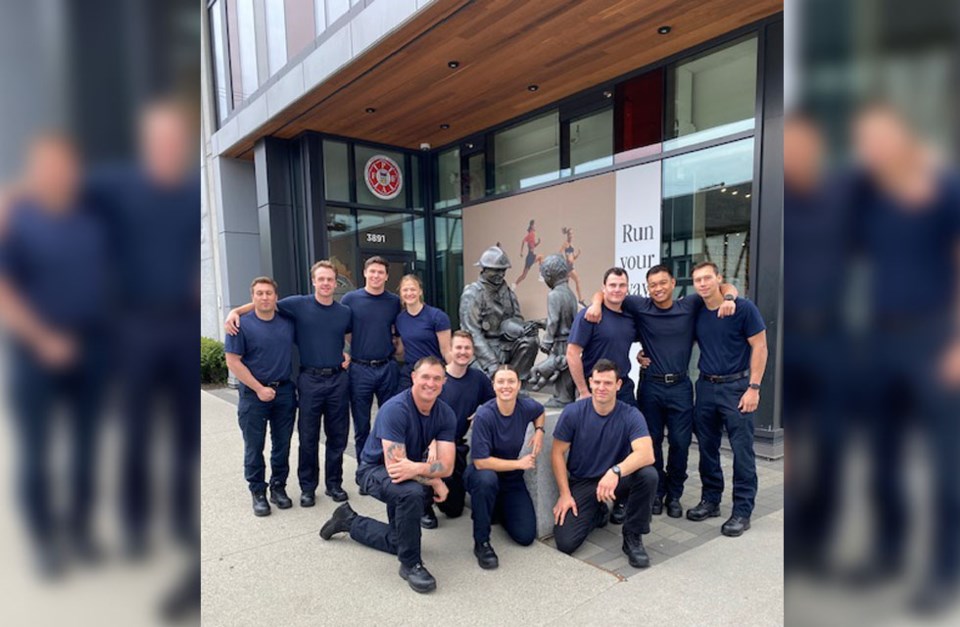New Westminster Fire and Rescue Services’ 11 new recruits are helping the department meet the needs of a growing city.
As part of the City of New Westminster’s 2024 budget, council supported the hiring of nine new firefighters – part of a multi-year strategy for building up the department. Eleven new recruits – some filling those newly approved positions and others filling vacancies from retirements – started work with the NWFRS in May.
“The city is expected to continue to grow. Our call volume was a record-high calls last year, and we're anticipating this year to even be more than we had last year,” said acting fire Chief Brad Davie. “We're on pace for over 8,000 calls.”
Davie, who has worked with the fire department since April 1999, said this year marks the first time in his career that he has ever seen an increase to its staffing level. He noted that the number of calls attended by today’s crews are more than double those received back when he first became a firefighter in New West.
“We’re trying to increase our staffing complement to make sure that we can meet the demands of the city as the call volumes and the populations increase,” he said.
According to Davie, the increased budget to hire more firefighters has been partially offset by a reduction in overtime expenditures.
“By adding some staff, not only will we have more staff available on duty, but we actually are seeing that our overtime has gone down. We do have some minimum staffing levels,” he explained. “We've needed to call in people on overtime less often, to make sure that we meet our minimum safety staffing levels.”
Davie said the department had originally offered positions to 12 new recruits, but one took a job with another department late in the process so only 11 went through the training.
Davie is confident the demographics and skills of the newest recruits, including one who had worked as a paramedic, continue to add to the department’s increasing diversity.
“Their performance has just been phenomenal. We're pretty happy with how this class’s development has gone from the beginning,” he said. “Sometimes you get a big group, and it can be tough to bring the whole group along, but apparently it's a group of superstars.”
New Westminster Firefighters Association Local 256 said the department’s new recruits are now closing in on three months of service. That includes five weeks of suppression training followed by two weeks of Emergency Medical Responder training and licensing to prepare them for the role of a firefighter.
After going through weeks of training together, the recruits were then assigned to different halls and shifts, where they are now responding to calls and continuing their learning.
“Their onboarding training takes almost a full year to complete; that's where they're at now,” Davie said. “There's a lot to the modern-day firefighter.”
As they gain experience with the department, the rookies will begin receive training in additional skills, such as driving fire trucks.
“It's quite a continuum for your first four years of education,” Davie said. “It is pretty extensive.”
New Westminster Firefighters Association Local 256 is pleased that the City of New Westminster has recognized the increased demand in emergency calls to the fire department and has increased the department's personnel numbers.
“Emergency call volume has seen a year-on-year increase, coupled with an opioid crisis, climate-change-driven heat and cold emergencies, and a housing crisis,” said the association in a statement to the Record. “These factors have all driven the department's emergency responses to a level never seen before. An increase in staffing should help to alleviate some of the demands.”
According to Local 256, fire departments across the Lower Mainland and B.C. are increasing the number of firefighter positions, working towards providing safe staffing levels for their current firefighters and citizens.
“With a continued increase in fires and emergency call volume in general, the fire department needs to keep up with the growth of the city's population,” said the association. “An increase in call volume comes with an added challenge – once an apparatus is tied to a call, the vehicle and crew are unavailable. This means the fire department can be unable to send the minimum required number of firefighters to a fire, increasing the risk to firefighters, citizens, and property.”




